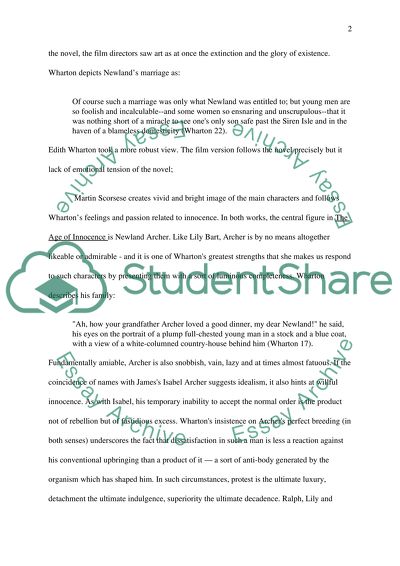Cite this document
(“Comparison of Martin Scorsese's On-screen adaptation and Edith Essay”, n.d.)
Comparison of Martin Scorsese's On-screen adaptation and Edith Essay. Retrieved from https://studentshare.org/miscellaneous/1558118-comparison-of-martin-scorseses-on-screen-adaptation-and-edith-whartons-age-of-innocence
Comparison of Martin Scorsese's On-screen adaptation and Edith Essay. Retrieved from https://studentshare.org/miscellaneous/1558118-comparison-of-martin-scorseses-on-screen-adaptation-and-edith-whartons-age-of-innocence
(Comparison of Martin Scorsese'S On-Screen Adaptation and Edith Essay)
Comparison of Martin Scorsese'S On-Screen Adaptation and Edith Essay. https://studentshare.org/miscellaneous/1558118-comparison-of-martin-scorseses-on-screen-adaptation-and-edith-whartons-age-of-innocence.
Comparison of Martin Scorsese'S On-Screen Adaptation and Edith Essay. https://studentshare.org/miscellaneous/1558118-comparison-of-martin-scorseses-on-screen-adaptation-and-edith-whartons-age-of-innocence.
“Comparison of Martin Scorsese'S On-Screen Adaptation and Edith Essay”, n.d. https://studentshare.org/miscellaneous/1558118-comparison-of-martin-scorseses-on-screen-adaptation-and-edith-whartons-age-of-innocence.


